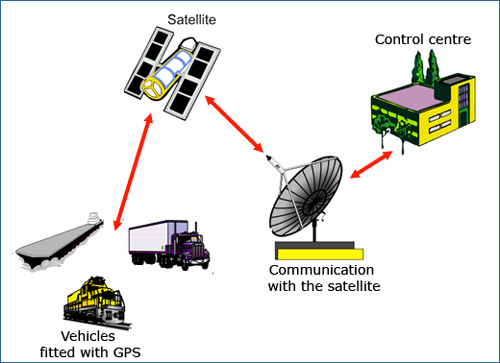Incidents but no accidents…
Have radioactive material transport operations caused any accidents? Are the fears and determination of environmental militants protesting against such convoys justified, or are they simply a facet of their opposition to the nuclear industry as a whole?
There have been no transport-related accidents to date, only incidents, none of which have resulted in significant releases. It is important to remember that the transported radioactive materials are not explosive. In the event of an accident, they would not burn like a petrol tanker.

Transport monitoring
Movements of highly radioactive materials, whether by sea, road or rail, are monitored at all times. These sensitive transport operations are subject to very stringent international regulations issued by the International Atomic Energy Agency (IAEA) as well as domestic regulations issued by safety authorities.
© DOE
To date, Areva has transported more than 50,000 fuel assemblies. Thanks to the precautions taken, transport-related incidents have been minimised and lessons learned where appropriate.One of the most significant incidents occurred in February 1997, when a package containing irradiated fuel was dropped in the port of Cherbourg following a lifting equipment failure. Only superficial damage was caused, and no radioactive products were dispersed by the fall.
In November 1991, three wagons carrying transport casks containing irradiated fuel were derailed in the station in Apach, on the Franco-German border. No contamination occurred as a result of this incident.
The most widely reported incident occurred in Valognes station in the spring of 1998. Contamination checks on irradiated fuel transport casks detected contamination exceeding the limits prescribed in the relevant standards, attributable to inadequate rinsing of the cooling fins. However, expert assessments revealed that the doses received by the most exposed individuals would not have exceeded 1 mSv in the worst-case scenario. More stringent inspections were introduced in the light of this incident, to prevent any recurrence of exceeded radiation limits.

Valognes incident (1998)
Air flowing over the fins on the surface of transport cask cools the spent fuel inside it. As spent fuel is loaded underwater for radiation protection reasons, the cask’s surface may be contaminated by the radioactive elements present in the water in the pool in which the loading operation is performed. This surface contamination is removed by intense, thorough rinsing. The contamination observed during the incident was due to inadequate rinsing. Rinsing performance monitoring was upgraded following the Valognes incident.
© Philippe Lesage/AREVA
Reprocessied waste is conditioned. The most radioactive waste is vitrified. Vitrified waste is subject to little risk of dissemination. Plutonium is conditioned as oxides in sealed boxes. Plutonium oxide, PuO2, is insoluble and relatively immobile. MOX is transported inside 75-tonne, 6.1 m long steel cylinders. This package is equipped with a sealed closure system and a shock-absorbing cap at each end.
If the cask is immobilised, its 30 cm-thick walls protect against radiation. Only gamma rays are not totally blocked. The corresponding risk concerns workers who work for extended periods in the vicinity of the cask. The order of magnitude of the dose received in such cases is 0.5 mSv per hour at a distance of 5 metres. A worker would have to spend a whole day near the cask before receiving a dose equivalent to one year’s exposure to average natural background radioactivity.
There have been no attempted thefts. Not just anybody could steal a container of radioactive material weighing several tonnes. Assuming that a group of thieves had sufficient radiation protection to handle the radioactive substances, they would immediately be located by the convoy tracking systems and would not escape pursuing authorities.
Learn more :
Other articles on the subject « Waste management »
Waste management status
Repositories already in operation for low-level waste Compared with other types of waste, the mas[...]
Other storage facilities
Interim waste storage according to their nature and origin Spent fuel and vitrified waste from Pr[...]
Temporary storage
A temporary solution Interim storage is a temporary solution that plays a central role in the man[...]
Vitrified waste Storage
Dry storage of vitrified waste Spent nuclear fuel assemblies are not the only materials removed f[...]
Spent fuel storage
Interim storage in pools and then dry locations In all countries, spent fuel management begins wi[...]
Management outside France
Overview of waste management strategies outside France Management of the least radioactive waste [...]
LILW-SL waste repository
Disposal of low and intermediate-level short-lived waste Low and intermediate-level short-lived w[...]
VLLW repository
An operational repository for very low-level waste The second category of waste for which a repos[...]
High level waste transportation
Moving highly radioactive materials The 10% of transport movements that concern high-level radioa[...]
Transport safety
Measures to ensure safe transport Nuclear materials may be highly radioactive. The goal is to pre[...]